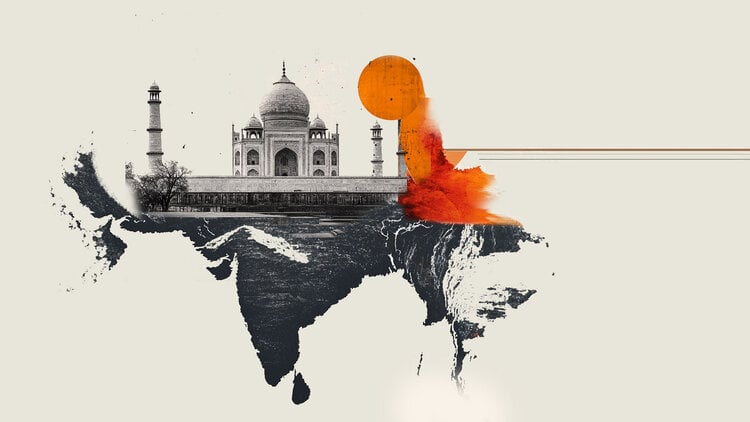USD/INR rises as Trump-induced tariffs storm intensifies

- The Indian Rupee attracts some sellers in Monday’s early European session.
- An intensifying trade war triggered by Trump’s tariff policy weighs on the INR.
- Investors brace for the RBI interest rate decision on Wednesday, which is anticipated to cut rates by 25 bps.
The Indian Rupee (INR) trades in negative territory on Monday. The local currency remains under pressure after US President Donald Trump unveiled a bigger-than-expected wall of tariffs around the world’s largest economy, upending trade and supply chains. On the other hand, a fall in crude oil prices might help limit the INR’s losses. It’s worth noting that India is the world’s third-largest oil consumer, and lower crude oil prices tend to have a positive impact on the Indian currency value.
Investors will monitor how trade tariffs affect foreign exchange markets. The Reserve Bank of India (RBI) will announce its policy decision on Wednesday and is widely expected to cut rates by 25 basis points (bps) amid expectations that monetary policy may turn more supportive as tariffs threaten to hurt economies globally.
Indian Rupee loses traction as Trump tariffs shock continues
- The HSBC final India Services Purchasing Managers’ Index (PMI), compiled by S&P Global, improved to 58.5 in March from a preliminary estimate of 57.5. The HSBC Indian Composite PMI rose to 59.5 in March, compared to a preliminary reading of 58.6.
- Trump said last week that he would impose a 26% tariff on imports from India effective from April 9, a component of his comprehensive plan to place duties on all US imports.
- US Nonfarm Payrolls (NFP) rose by 228,000 in March from the revised 117,000 in February, according to the Labor Department on Friday. This figure came in stronger than the 135,000 expected.
- The US Unemployment Rate ticked up to 4.2% in March versus 4.1% prior, higher than the 4.1% forecast. Average Hourly Earnings increased 0.3% MoM in March, in line with the market consensus, while the annual rate of Average Hourly Earnings rose 3.8%, the lowest level since July 2024.
- Federal Reserve (Fed) Chair Jerome Powell said on Friday that inflation is likely to pick up because of Trump’s sweeping tariffs and could remain elevated.
USD/INR’s outlook remains bearish under the 100-day EMA
The Indian Rupee weakens on the day. However, in the longer term, the bearish outlook of the USD/INR pair remains in place as the price is below the key 100-day Exponential Moving Average (EMA) on the daily timeframe. The downward momentum is reinforced by the 14-day Relative Strength Index (RSI), which stands below the midline near 38.90, suggesting that the path of least resistance is to the downside.
The initial support level for USD/INR is located at 85.20, the low of April 3. Extended losses could see a drop to the 85.00 psychological level. The additional downside filter to watch is 84.84, the low of December 19.
On the upside, the 100-day EMA at 85.87 acts as an immediate resistance level for the pair. Any follow-through buying above this level could pave the way to 86.48, the low of February 21, en route to 87.00, the round mark.
RBI FAQs
The role of the Reserve Bank of India (RBI), in its own words, is “..to maintain price stability while keeping in mind the objective of growth.” This involves maintaining the inflation rate at a stable 4% level primarily using the tool of interest rates. The RBI also maintains the exchange rate at a level that will not cause excess volatility and problems for exporters and importers, since India’s economy is heavily reliant on foreign trade, especially Oil.
The RBI formally meets at six bi-monthly meetings a year to discuss its monetary policy and, if necessary, adjust interest rates. When inflation is too high (above its 4% target), the RBI will normally raise interest rates to deter borrowing and spending, which can support the Rupee (INR). If inflation falls too far below target, the RBI might cut rates to encourage more lending, which can be negative for INR.
Due to the importance of trade to the economy, the Reserve Bank of India (RBI) actively intervenes in FX markets to maintain the exchange rate within a limited range. It does this to ensure Indian importers and exporters are not exposed to unnecessary currency risk during periods of FX volatility. The RBI buys and sells Rupees in the spot market at key levels, and uses derivatives to hedge its positions.




